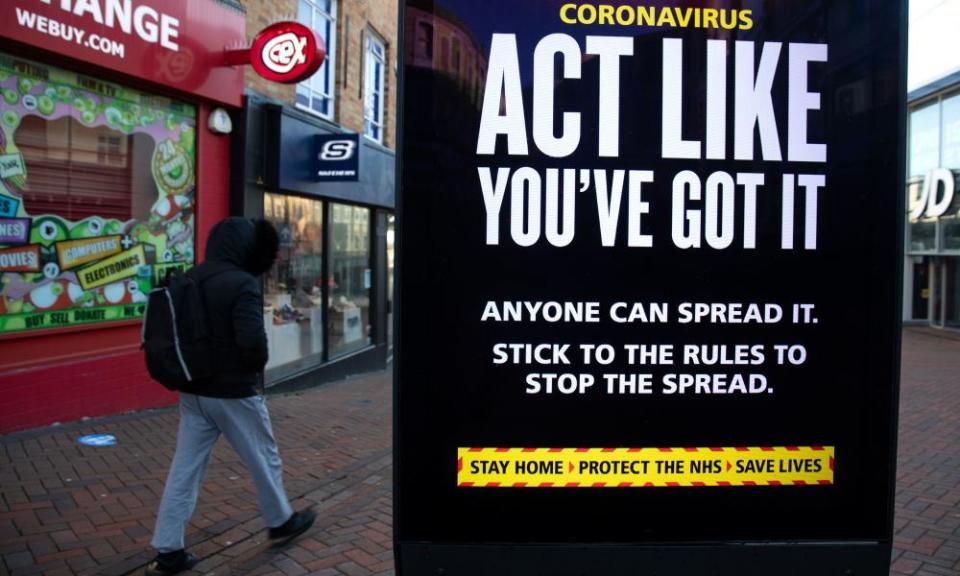Data shows slight fall in people testing positive for Covid in England

The percentage of people testing positive for coronavirus in England has fallen slightly since the latest lockdown was introduced, but remains high, data has shown.
The latest release from the Office for National Statistics, which conducts a survey based on swabs from randomly selected households, has found that between 3 and 16 January about 1.9% of people in the community in England, or one in 55 people, had Covid – a decline from about one in 50 between 27 December and 2 January.
“The percentage of people testing positive remained high in England, but the rate of infection has decreased slightly in recent weeks,” the ONS said, noting that in London, where rates were highest, about one in 35 people had the virus in the week ending 16 January, compared with about one in 30 people between 27 December and 2 January.
The findings chime with the latest reproduction number (R) released by the government of between 0.8 and 1.0 for both England and the UK as a whole, with the number of new infections for the latter shrinking by between 1% and 4% each day. The team behind these figures notes that these R numbers represent the transmission of the coronavirus over the past few weeks.
The ONS findings come in the same week as the release of the latest data from the React population surveillance study, which analysed data based on swabs from about 140,000 randomly selected people in England across 315 local authority areas.
The React findings, covering the period from 6-15 January, suggested that, while new infections might have dropped recently, they may be flattening off at a national level – although there are regional variations in the trend.
The team said that might, potentially, be explained by an analysis of mobility data, which revealed a rise in movement in the new year, following a decline just after Christmas.
The national picture in the new ONS data masks differences in regional trends. According to the latest figures, the percentage of people testing positive for Covid has increased in the south-west, north-east and West Midlands since the start of the year, although it has recently levelled off in the latter two regions, while in Yorkshire and the Humber, the East Midlands, London, the east of England and the south-east positivity rates have fallen over the same period.
Similar variations are seen in the regional R values released on Friday, with the figure between 0.7 and 0.9 for London, compared with 0.6 to 0.9 for the east of England and 0.9 to 1.2 for the south-west.
The ONS team also reports that there has been a fall in positivity rates for the new, highly contagious UK variant in some regions of England, but that it is on the rise in Northern Ireland, Wales and Scotland.
“The percentage of people with new variant compatible positives has decreased in London, the south-east and the east of England in the week ending 16 January 2021; in other regions, increases in new variant compatible positives have generally levelled off,” they write.
In Wales, and Scotland, the ONS figures suggest the positivity rate overall has levelled off, but in Northern Ireland it is rising, with about one in 60 people thought to have had Covid in the most recent week, compared with about one in 200 between 27 December and 2 January.
Steven Riley, a professor of infectious disease dynamics at Imperial College London who is part of the team behind the React survey, said it would be interesting to see how the number of positive cases from daily figures shown on the government dashboard change in the coming days.
While the overall number of positive cases has fallen rapidly since the start of the year, the decline in the positivity rate, which takes into account the number of tests carried out, has recently begun to show tentative signs of a slowdown in England, according to analysis by the Independent Sage group of scientists.
Riley said a plateau of cases at present would be concerning. “If there is a plateau at current levels that would [result in] an unacceptable number of deaths and an unsustainable load on the NHS,” he said.

 Yahoo Finance
Yahoo Finance 